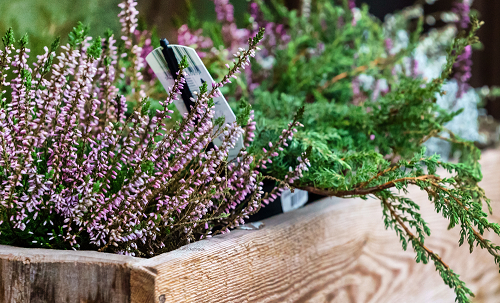Top 10 Winter Gardening Tips You Need to Grasp
Winter may not offer favorable growing conditions for your plants to thrive, but this does not mean you stop tilling your garden. One main advantage of winter gardening is that most plants go into dormancy naturally, meaning they do not require much care. Besides, there are fewer pests to deal with, and you do not have to water your garden every time.
Whether you have a small kitchen garden or you prefer to help out in your local community farm, there’s plenty to do in the garden, even during the cold winter months. You can mulch your crops, uproot existing weeds, and prune young deciduous trees as you prepare your winter plants for the bloom in spring.

Find Below Excellent Winter Gardening Tips
- Choose Plants Suited to Your Climate
Always select plants suited for your climate to have any chance of them surviving through the winter. Cabbage, spinach, ornamental kale, garlic, carrots, beets, and broccoli are examples of hardy vegetables that can withstand harsh winter conditions. These crops can resist temperatures below 28°F, making them the ideal choice for winter gardening.
- Prune Your plants
Winter is always a good time to cut off dead leaves, flowers, and branches, especially when dealing with deciduous plants. Since the plants have countable leaves, you can see the plant’s form and spot areas affected by disease or pests. Pruning also helps the plants to conserve as they go into a state of dormancy.
- Avoid Using Fertilizers During Winter
As a general rule of thumb, avoid using fertilizers during winter. Applying fertilizer may interrupt the natural dormancy cycle and force new growth that may not withstand the freezing temperatures. The only exceptions to this rule are the winter vegetables and flowers. However, make sure the fertilizer used is minimal until the start of spring.
- Shift Potted Plants Indoors
Houseplants should remain indoors during winter. If you have any potted plants in your outdoor space, consider bringing them inside to protect them from the hard frost and cold temperatures.
Shifting them inside will increase the temperature by 5 degrees. Place the plants near the window for indirect light and heat from the sun. If you have sun-loving plants, you may have to return them outdoors during the daytime and bring them back inside in the evening.
- Cover Your Plants
Another brilliant winter gardening tip is to cover your plants for extra protection. This particular tip is crucial if you don’t want to bring your plants indoors. You can use frost cloth or any transparent heat-retentive blankets to cover the plants. You may also use zip lock bags or polythene covers to do the same. Ensure the covering material has enough perforations and leave some space at the bottom to allow adequate air circulation.
- Add Mulch
Adding a layer of mulch to your garden during winter can help preserve moisture and keep root temperatures stable. Mulching also prevents the growth of weeds, ensuring your plants do not have competition for nutrients. The best part is that you can use a wide range of readily available materials such as twigs, straw, and shredded leaves to create mulch.
- Use Artificial Heat Lamps
Heat and light are essential to plants as they facilitate photosynthesis and keep the plants warm. If the temperatures drop to unforgiving levels, consider supplying a heat source like a high wattage light bulb, room heaters, or LED plant grow lights. These options will help your plants withstand the extreme cold and survive through the winter.
- Reduce Frequency of Watering
Most plants do not require watering during winter, thanks to the low evaporation rate during the cold season. Moreover, plants usually grow at a slower rate during winter as most of them go into dormancy. For these reasons, you should reduce the frequency of watering to protect your plants from root rot.
- Mist Your Plants
Even though plants do not require much watering during winter, consider spraying them with light mist at least once every day. Considering the shorter days and low-light conditions in winter, you should clean the plants’ leaves to allow proper photosynthesis.
- Consider DIY Greenhouses
If you want to grow your plants all year round, regardless of the season, then consider investing in greenhouses or potting sheds. These houses create the ideal conditions by trapping solar radiation, keeping your garden warm for plants to thrive. They also protect your plants from heavy snow and rainfall.
Talk to the experts
Despite the harsh conditions, you can still enjoy quality time in your garden during winter, doing what you love best. All you have to do is select hardy plants that can survive through the shorter days and the colder temperatures.
For more information and recommendations on winter gardening tips, do not hesitate to consult our team at DK Landscaping. Our professional landscapers will guide you through the dos and don’ts of winter gardening.
You can leave a response, or trackback from your own site. Back to Top
Leave a Reply





